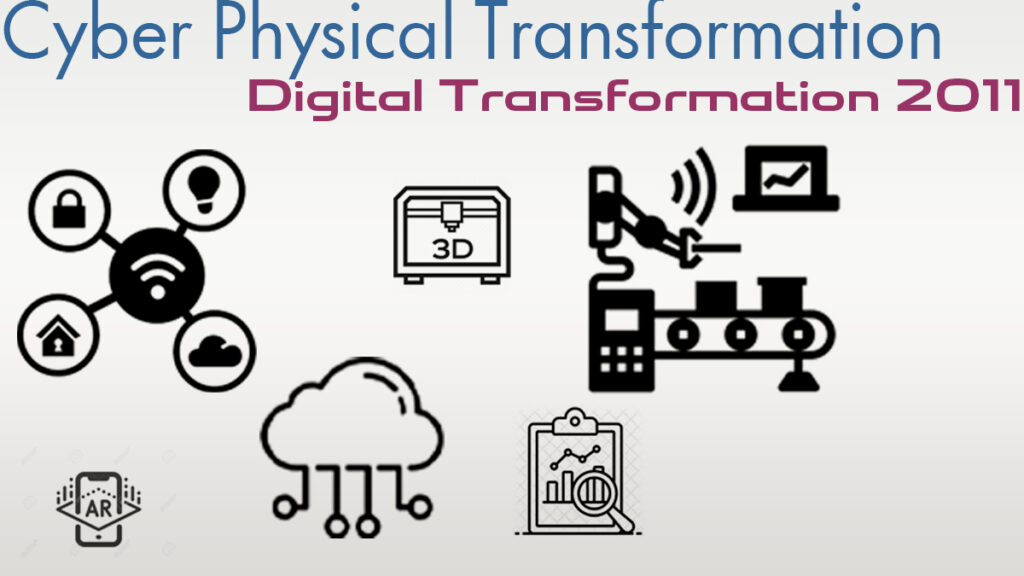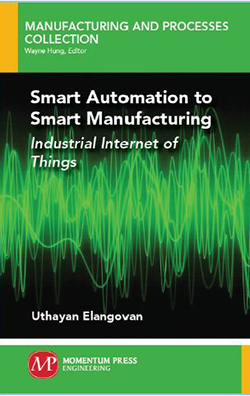
The Cyber Physical Transformation describes the fourth industrial transformation also called as Industry 4.0. After Mechanical Transformation, Science and Technology Transformation, as well Digital Automation transformation, currently the “Industrial Internet of things” is happening a crucial element of production. It is depicted by a range of brand-new developments that are incorporating the physical, all-natural and likewise electronic worlds, impacting all business organizations.
Introduction:
Industry 4.0 marks the next phase of the industrial revolution, bringing forth a cyber-physical transformation that is set to revolutionize the manufacturing landscape. This paradigm shift is characterized by the integration of digital technologies, data-driven decision-making, and the seamless connection between physical and virtual systems. In this article, we will explore the key elements of Industry 4.0, the benefits it offers to manufacturers, and its potential impact on the future of manufacturing. Finally, we’ll touch upon the emerging concept of Industry 5.0 and its potential implications.
The globe can maybe connect billions a whole lot more individuals to advanced systems, considerably improve the effectiveness of organizations as well additionally handle resources in manners that can help recuperate the natural environment, understandably fixing the injury of previous mechanical discontents. The digitalization of the manufacturing business service is an element of around the world premium, in Germany the tip is referred to as “Industrie 4.0.”
New items have to be communicated to display in ever shorter time allotments. Customers require things that satisfy their particular requirements. Rapidly transforming markets ask for an establishing degree of flexibility. What’s a lot more, the regular wish for increased efficiency suggests much shorter and also much shorter improvement time and also the proficient use possessions and also vitality. All with no loss of value and also enhanced premium quality, every now and then.
Cyber Physical transformation (Industry 4.0) is happening today by means of using cyber-physical systems. It implies that physical systems such as manufacturers and robotics will certainly be regulated by automation systems outfitted with artificial intelligence formulas. Very little input from human will certainly be required.
Key Elements of Industry 4.0
Internet of Things (IoT): Industry 4.0 is fueled by the widespread adoption of IoT devices, which enable machines, sensors, and other assets to communicate and exchange data. This interconnected network creates a wealth of information, allowing manufacturers to gain real-time insights into their operations and optimize processes for maximum efficiency.
Big Data and Analytics: With the vast amounts of data generated by IoT devices, big data analytics plays a crucial role in Industry 4.0. Manufacturers can harness this data to identify patterns, predict maintenance needs, optimize supply chains, and make data-driven decisions that enhance productivity and reduce costs.
Artificial Intelligence (AI) and Machine Learning: AI and machine learning algorithms analyze large datasets to identify trends and patterns that humans might miss. These technologies enable autonomous decision-making, predictive maintenance, quality control, and even the creation of new product designs based on consumer preferences.
Cybersecurity: As more devices and systems become interconnected, the need for robust cybersecurity measures becomes paramount. Industry 4.0 emphasizes the implementation of cybersecurity protocols to protect sensitive data and safeguard against potential cyber threats.
Additive Manufacturing (3D Printing): Industry 4.0 has seen a surge in the adoption of additive manufacturing technologies. 3D printing enables rapid prototyping, customization, and cost-effective production, making it a game-changer for manufacturing processes.
Benefits of Industry 4.0 for Manufacturers
- Increased Efficiency: The integration of digital technologies and real-time data analysis allows manufacturers to identify bottlenecks, streamline production, and optimize resource allocation, leading to enhanced overall efficiency.
- Cost Reduction: Industry 4.0 enables predictive maintenance, reducing downtime and minimizing the cost of unexpected breakdowns. Additionally, optimized processes lead to better resource utilization and reduced waste.
- Improved Quality: AI-driven quality control and real-time data analysis ensure that defects are identified early in the production process, leading to higher product quality and customer satisfaction.
- Enhanced Customization: With additive manufacturing and data-driven insights, manufacturers can offer more personalized and customized products to meet individual customer demands.
- Supply Chain Optimization: Industry 4.0 enables manufacturers to monitor the entire supply chain in real-time, facilitating better inventory management, demand forecasting, and logistics coordination.
Industry 4.0 and the Future of Manufacturing
Industrial IoT or IIoT: Industry 4.0 technological innovation permit tracking of events across a supply chain, giving access to real-time information by tracking inputs, equipment, as well as products. RFID tags along with various other sensing units are made use of to track inventory as it moves the supply chain. Utilizing this information, manufacturers can recognize interdependencies, map product circulation, and track manufacturing cycle times. It is the very first step towards changing a conventional factory to smart connected manufacturing facility.
Manufacturing systems that already utilize computer assisted technology are expanded by a network and also have a digital twin. These enable interaction with various other facilities and also the result of information about themselves. The fourth transformation has the prospective to provide some extraordinary advances in factory environment which is called as Smart Factory. Instances consist of devices which can anticipate failings as well set off upkeep procedures autonomously which respond to unanticipated changes in the shop floor operations.
IIoT, is the application of instrumentation, linked sensors, along with various other tools to equipment besides procedures in industrial settings. With this said who is the main drivers of IIoT? – Organization problems are the most important one which drives the fostering of IoT in production.
The manufacturing industry obtained segmented right into discrete and process industries to meet market needs. Most typical and vital business concern of any discrete manufacturers which requires high priority is in Supply chain. These industries began to develop operational modern technologies (OT) like specialized PLCs, SCADAs and sensors to gather data, control processes and also monitor KPIs. With the advancement of Cyber Physical Transformation technologies helps manufacturers to collaborate with ICT to enhance their procedure besides existing systems results in birth of SMART Connected Factory.
Smart connected manufacturing facility is producing a brand-new industrial environment defined by manufacturing organization capable of accumulating, acting and assessing upon data to materialize time manufacturing choices. The ultimate vision is to produce a factory atmosphere where down time is minimized, waste is removed, along with procedure actions is optimized based on choices made offered current operating conditions. The development of the Smart Factory guarantees a degree of lean procedures and also efficiency that was previously difficult to accomplish.
Industry 4.0 is not merely a technological evolution; it represents a fundamental shift in how manufacturing operates. By leveraging the power of digital technologies, manufacturers can create highly adaptive and responsive production systems, leading to new business models and increased competitiveness.
Fully grown innovations incorporated with the introduction of new IIoT modern technologies will certainly power the following generation of efficiency enhancements, economic situations of scale, and also capacities that will be seen in the advancement of the Smart Factory. How to accomplish Smart Connected manufacturing facility, solution lies in the organizational change. Two crucial indicate be consider are as to have inner IIoT experienced resource to construct the smart connected environment and start with small use case (business issue) which will certainly able to reveal ROI.
The cyber-physical transformation of Industry 4.0 opens up possibilities for autonomous and self-optimizing factories, where machines communicate and cooperate without human intervention. Smart manufacturing systems can adjust production schedules, prioritize orders, and allocate resources based on real-time demand and supply information.
Industry 4.0 fosters collaboration and connectivity between different players in the manufacturing ecosystem, including suppliers, manufacturers, and customers. This connectivity enhances transparency and efficiency throughout the value chain, enabling manufacturers to respond quickly to market changes and customer preferences.
The Emergence of Industry 5.0
As Industry 4.0 continues to shape the future of manufacturing, there is already speculation about the next phase of industrial revolution – Industry 5.0. While the concept is still evolving, Industry 5.0 is expected to focus on the harmonious integration of humans and machines.
Industry 5.0 seeks to create a work environment where advanced technologies like AI, robots, and automation work collaboratively with human workers. Human creativity, problem-solving abilities, and emotional intelligence will complement the capabilities of machines, leading to more meaningful and fulfilling work experiences.
In Industry 5.0, humans would play a central role in decision-making, innovation, and tasks that require empathy and intuition. The symbiotic relationship between humans and machines would lead to higher productivity, greater job satisfaction, and sustainable economic growth.
Conclusion:
Industry 4.0 is a transformative force that is revolutionizing the manufacturing industry through its cyber-physical integration. The convergence of IoT, big data, AI, and additive manufacturing has unlocked a new era of efficiency, customization, and agility in manufacturing operations.
As Industry 4.0 continues to unfold, manufacturers must embrace the opportunities it presents, adapt their processes, and invest in the necessary technology and skill development. This evolution sets the stage for the emergence of Industry 5.0, where human-machine collaboration will redefine the way we work and produce goods, shaping a more dynamic and promising future for manufacturing.
Check out the book on Industrial Internet of Things as



